

MilitaryHistoryNow.com
The Premier Online Military History Magazine
Gooney Birds – 12 Experimental Aircraft That Were Too Weird for Use in WW2

“A number of these experimental aircraft featured designs so innovative and outlandish they call out for recognition even now, more than 70 years later.”
MORE AIRPLANES rolled off assembly lines during World War Two than in any other period in the history of aviation.
Between 1939 and 1945, Allied factories cranked out a staggering 633,000 aircraft. That’s 288 a day – or one every five minutes for six years straight. For their part, Germany, Italy and Japan manufactured more than a quarter million machines.
In all, at least 750 distinct models of aircraft were in production during the war years. And amazingly, more than 250 additional designs, from fighters and bombers to trainers and transports, were evaluated and rejected by the world’s air forces. Some of these also-rans were passed over for being too expensive, others were too slow, ungainly or not safe for combat. Yet despite their unsuitability, a number of these experimental aircraft featured designs so innovative and outlandish they call out for recognition even now, more than 70 years later. Let’s take a look at some.
Flying Sidesaddle

Despite its decidedly lopsided appearance, the German Blohm and Voss Bv-141 might have been a capable tactical reconnaissance aircraft for the Luftwaffe. The single-engine machine featured a three-man cockpit and observation pod positioned away from the fuselage on the starboard wing. With the exception of a blind spot created by the engine nacelle, the design did afford the observation crew and rear gunner a surprisingly wide field of view. Despite the fact that the plane had a rather high-profile champion in flying ace and Luftwaffe luminary Ernst Udet , Berlin passed on it in 1940 citing the feeble engine as the chief drawback. By the time the manufacturer upgraded the power plant, the German air force had already settled on the Focke-Wulf Fw-189 .
Airborne Anti-Aircraft Gun

The concept of placing aircrew away from the fuselage wasn’t just a German idea. The Bell Aircuda YFM-1 had similar wing mounted crew cabins – two of them. Developed in the late 1930s as a sort of flying anti-aircraft battery for use against enemy bomber formations, the YFM-1 featured manned forward-facing gun turrets on both wings, each packing a 37mm cannon. To make room for the cabins, the plane’s engines faced aft. The U.S. Army ordered 13 of these curious “bomber destroyers” for evaluation purposes in 1940, but withdrew them from service within two years after the design’s many shortcomings became evident. With a top speed of only 275 mph (450 km/h) the YFM-1 was far too slow to catch most bombers of the day. Also, its “pusher” style engines made for unstable handling and risky bailouts. All models were eventually broken up for scrap.
Failure to Launch

Less of an airplane and more of a flying shotgun, the rocket-powered Bachem Ba-349 Natter interceptor was designed to overtake Allied bombers and pepper the enemy formations with salvos of up to 33 unguided explosive-tipped projectiles. Natters required no runways for take off; they could be launched vertically from just about any flat surface. The plane’s powerful rocket engine was designed to hurtle it 30,000 feet (9,000m) into the air in under a minute. Once at altitude, the pilot could easily overtake and destroy adversaries and then glide back to earth. Both the Luftwaffe and SS expected to add the Natter to their inventories. But by the time the Ba-349 was ready for service, Nazi Germany was mere days from defeat. Only 36 were ever built – none saw action.
Taking the Edge Off

Designers of the McDonnell XP-67 Moonbat hoped that by smoothing the edges of their twin-engine, long-range interceptor, they could create a futuristic fighter that could outfly anything in the air. And while the prototype, which first took the skies in early 1944, certainly looked fast and agile, performance was wanting. With a top speed of just 400 mph (640 km/h), the Moonbat was altogether too slow and its handling mediocre at best. But had the XP-67 entered production, its battery of six 37 mm cannons would have made it a fearsome ground attack machine. The only working model was lost in an accident after only nine months.
Flying Saucer

“Round” was also the watchword for the Vought V-173 Flying Pancake – a twin-engine demonstrator that looked more like a frisbee than an airplane. Despite its solid handling at low speeds (as confirmed by test pilot Charles Lindbergh ) and its ability to take off and land in extremely small spaces, the V-173 never advanced beyond the demonstration phase. Only one was ever manufactured.
Conjoined Twins

A number of wartime designers toyed with the concept of twin fuselage fighters and bombers. North American sought to increase the range of its workhorse escort fighter, the P-51 Mustang, by joining two of the plane’s air frames together. The results were promising. The P-82 Twin Mustang was as nimble as a conventional P-51 but could fly from Hawaii to Manhattan without refueling. [ 1 ] The war ended before the aircraft could be delivered in large numbers; it went into limited production in the late 1940s. Germany took a similar approach with its experimental Messerschmitt Bf-109Z , which included two conjoined fighters with the cockpit situated in the port fuselage.
Strange But True

Speaking of envelope-pushing designs, consider Britain’s Miles M.39 Libellula , a swept-wing, twin-engine, medium bomber demonstrator that flew in 1943. The three-man attack aircraft was designed to deliver a 2,000 lb. payload more than 1,500 miles (2,400 km) at 400 mph (640 km/h). Despite the fact that the sole working prototype displayed impressive handling characteristics, the RAF passed on the unconventional aircraft.
The Ascender

At almost the same time, American engineers at Curtis Wright were also dabbling in swept-wing combat aircraft with the XP-55 Ascender . The pusher-style fighter interceptor was equipped with a rear-facing, three-blade propeller. Up front was a suite of 20 mm cannons and .50 caliber machine guns. The military balked at the design and its underwhelming flight characteristics.
Swoose Goose

Stranger still was the Vultee XP-54 a single-engine twin-boom fighter demonstrator that the military tested in 1943. The single-seat warplane featured a nose section that could be pivoted several degrees vertically, allowing the plane’s two 37 mm cannons to be easily trained towards the ground during level-flight strafing runs. This odd feature earned the XP-54 the nickname the “Swoose Goose” after a popular song of the time. With a top speed of only 380 mph (600 km/h), it’s no surprise that the War Department passed on this ugly ducking.
(Dis) Honourable Mentions

Resembling a giant paper airplane, Nazi Germany’s delta winged Lippisch P.13a rocket plane certainly looked futuristic; yet ironically it ran on a decidedly old fashioned power source: coal. Hitler’s engineers could never really get the idea off the ground in time to save the Third Reich however and none were built.

XP-56 Black Bullet was a stubby, delta-winged experimental American fighter plane first tested in 1943. With aluminum in short supply, developers built the two prototypes using magnesium. While the Black Bullet could reach speeds of up to 460 mph (740 km/h), the military rejected the space-aged design in favour of emerging jet aircraft.

And what list of outlandish experimental aircraft would be complete without mentioning the Hafner Rotabuggy ? A British-built “rotor kite” or autogyro, it was essentially a helicopter air frame built onto an ordinary Jeep. Designed to be dropped onto enemy territory during airborne operations, in tests the Rotabuggy managed to fly for several minutes at speeds of more than 60 mph (100 km/h) reaching an altitude of several hundred feet. Only one was manufactured in 1944. None were ordered.
Help spread the word. Share this article with your friends.
- Click to email a link to a friend (Opens in new window)
- Click to print (Opens in new window)
- Click to share on Tumblr (Opens in new window)
- Click to share on Pinterest (Opens in new window)
- Click to share on Facebook (Opens in new window)
- Click to share on Reddit (Opens in new window)
- Click to share on Twitter (Opens in new window)
- Click to share on LinkedIn (Opens in new window)
1 thought on “ Gooney Birds – 12 Experimental Aircraft That Were Too Weird for Use in WW2 ”
The Twin Mustang was a successful aircraft. One scored the first American air-to-air kill in the Korean War. The Twin was to have served as an escort fighter for the B-36.
Leave a Reply Cancel reply
This site uses Akismet to reduce spam. Learn how your comment data is processed .

From the MHN Archives
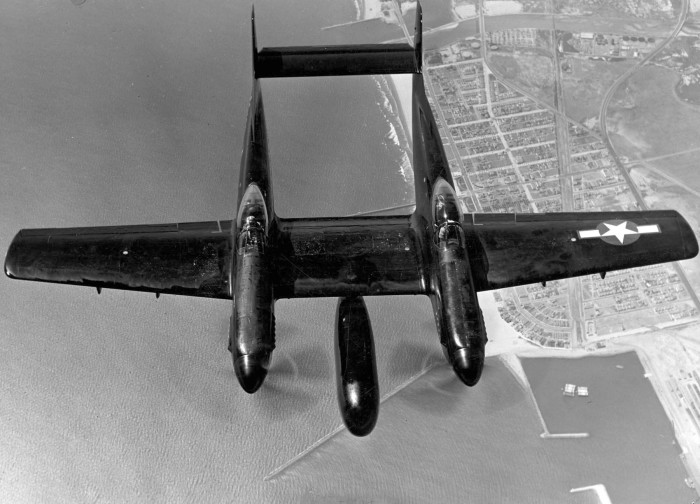
Top Posts & Pages
© COPYRIGHT MilitaryHistoryNow.com

- World War Wings on Facebook
Top 5 Experimental WW2 Planes That Were Ahead of Their Time

YouTube / Found And Explained
World War II saw a rapid advancement in aviation technology, as nations raced to develop faster, more powerful, and more innovative aircraft. Here are the top 5 experimental World War II planes that were truly ahead of their time.

1. Horten Ho 229 (Germany)
View this post on Instagram A post shared by Warplane Of Insta (@warplaneofinsta)
The Horten Ho 229, designed by the Horten brothers, was one of the most groundbreaking aircraft of World War II. This flying wing jet bomber was unlike anything the world had seen at the time.
With its sleek, wing-only design and twin jet engines, the Ho 229 could have revolutionized aerial warfare. It was intended to be faster and more difficult to detect by radar, which some believe makes it the first stealth aircraft. Though only a few prototypes were built and never saw combat, its radical design influenced the development of post-war stealth technology, including the B-2 Spirit bomber.
2. Messerschmitt Me 163 Komet (Germany)
View this post on Instagram A post shared by Adam Lenton (@adamsplenton)
The Messerschmitt Me 163 Komet was a rocket-powered interceptor that reached unparalleled speeds during the war. With a top speed of over 600 mph, the Me 163 was far faster than any other aircraft of its time.
However, this speed came at a cost. Its short flight time, limited range, and volatile fuel made it as dangerous to its pilots as it was to enemy bombers.
3. Northrop XB-35 (USA)
View this post on Instagram A post shared by WW2 Aviation (@worldwar2jets)
The Northrop XB-35 was another pioneering flying wing design, developed by the United States. Built as a long-range bomber, its unique design minimized drag and promised greater efficiency at high altitudes.
Though the XB-35 never entered mass production, it served as a precursor to the modern stealth bomber concept. Its advanced aerodynamics and internal bomb bays pointed toward a future where radar detection would become a critical factor in aircraft design.
4. Kyushu J7W Shinden (Japan)
View this post on Instagram A post shared by HARUKA1755 (@yosukehirano21)
The Kyushu J7W Shinden was a remarkable Japanese fighter that utilized a pusher-propeller configuration, with the propeller located at the rear of the aircraft rather than the front. Its unusual design also featured forward-swept wings, which were intended to provide greater maneuverability and high-speed performance.
Designed as an interceptor to defend against American bombers, the Shinden never saw combat due to the war ending before it could be mass-produced.
5. Focke-Wulf Triebflügel (Germany)
View this post on Instagram A post shared by Gert-Jan Zegel (scalemodels) (@gerts_scalemodel_workshop)
Perhaps the most radical design on this list, the Focke-Wulf Triebflügel was a vertical takeoff and landing (VTOL) aircraft that featured a rotating wing assembly. Instead of a conventional fuselage and wing structure, the Triebflügel had three rotor-like wings that spun around a central axis, providing both lift and thrust.
It was designed as an interceptor capable of launching from small, hidden locations, making it difficult to target on the ground. While the Triebflügel never progressed beyond the design stage, its VTOL concept was ahead of its time and inspired later developments in helicopters and jet-powered VTOL aircraft like the Harrier.
Don’t Miss Out! Sign up for the Latest Updates
- Uncategorized

The Best American Fighter of WW2

An Unexpected WW2 Plane That Terrified the German Fleet

Vintage WW2 Propeller Airplanes Cold Start-Ups and Powerful…

Listen to The P-51 Iconic Gun Port Whistle Showing Off

Why The All-Metal Mosquito Was Abandoned

3 Germany’s WWII Secret Helicopters That Were Ahead…

The Luftwaffe WWII Plane Dubbed As The Screaming Death That…
© 2025 World War Wings
- Privacy Policy
- Terms of Use
- Chuckles Zone
- Weird Wings
- Today I Learned

Top 10 Experimental Aircraft Of World War II
10. Blackburn B-20
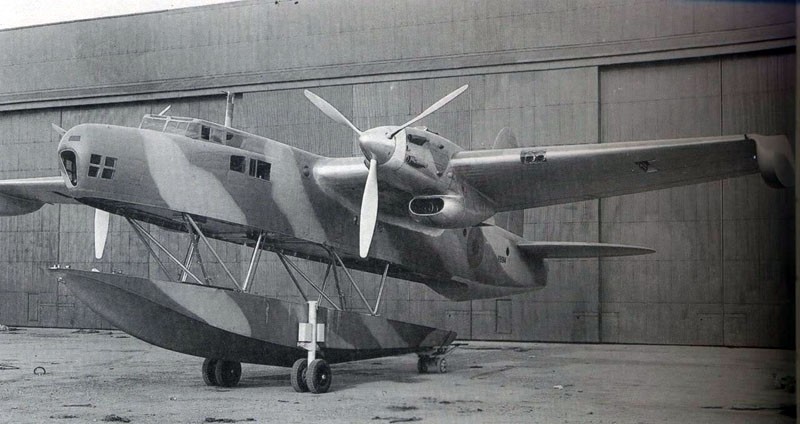
The B-20 was an attempt to combine the best features of both the flying boat and the floatplane. While on the water, the B-20 was essentially a floatplane, using a large float under the fuselage for buoyancy, and two smaller floats near the wingtips for stability.
In flight, the main float retracted upwards towards the fuselage, fitting into a “notch” to become streamlined as a part of the fuselage. The wing floats folded outwards, somewhat like those on the American Consolidated PBY flying boat design, to become the wingtips. This configuration gave the correct wing incidence for takeoff and for flight and in the latter a much reduced drag compared to the deep hulls of flying boats.
9. Ryan FR Fireball
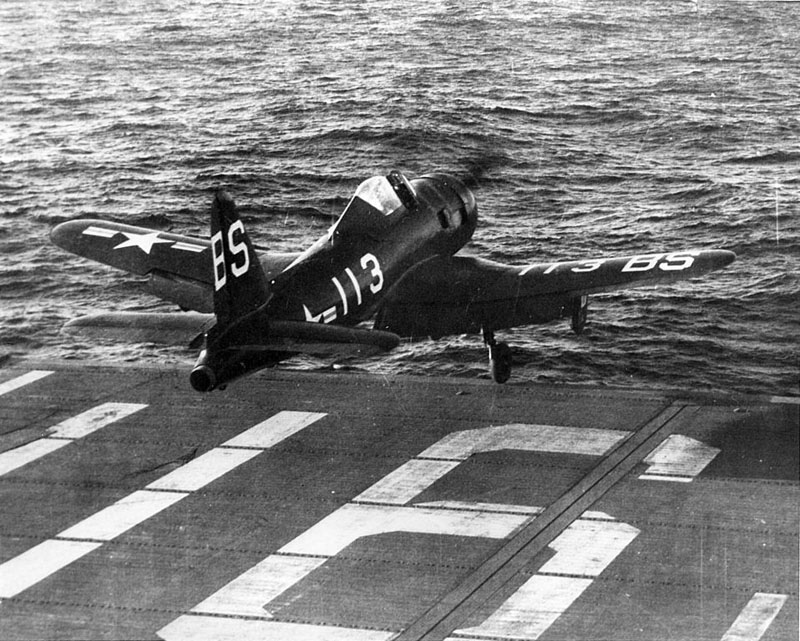
It was the Navy’s first aircraft with a jet engine. Design of the FR-1 began in 1943 to a proposal instigated by Admiral John S. McCain, Sr. for a mixed-powered fighter because early jet engines had sluggish acceleration that was considered unsafe and unsuitable for carrier operations. Ryan received a contract for three XFR-1 prototypes and one static test airframe on 11 February 1943 with the first two prototypes delivered in 14 months. Another contract was placed for 100 aircraft on 2 December 1943 and a later contract on 31 January 1945 increased the total of FR-1s on order to 700. Only 66 aircraft were built before Japan surrendered in August 1945. The FR-1 Fireball equipped a single squadron before the end of the war, but did not see combat. The aircraft ultimately proved to lack the structural strength required for operations aboard aircraft carriers and was withdrawn in mid-1947.
8. Blohm & Voss BV 238

Development of the BV 238 giant flying boat began in 1941, following the success of the smaller but still enormous BV 222 Wiking. The BV 238 was an extremely large flying boat of conventional aerodynamic design, but bearing the usual B&V structural hallmarks of all-metal construction with a tubular steel wing main spar which also acted as the armoured main fuel tank. Of the era, only the earlier Tupolev ANT-20 and the later Hughes H-4 had a bigger wing span. However it would be the heaviest yet flown, at 100 tonnes (220,000 lb) fully laden. It was the heaviest aircraft ever built when it first flew in 1944, and was the largest aircraft produced by any of the Axis powers during World War II.
7. Flettner Fl 282

Intended roles of Fl 282 included ferrying items between ships and reconnaissance. However, as the war progressed, the Luftwaffe began considering converting the Fl 282 for battlefield use. Until this time the craft had been flown by a single pilot, but by then a position for an observer was added at the very rear of the craft, resulting in the B-2 version. Later the B-2 proved a useful artillery spotting aircraft and an observation unit was established in 1945 comprising three Fl 282 and three Fa 223 helicopters. Good handling in bad weather led the German Air Ministry to issue a contract in 1944 to BMW to produce 1,000 units. However, the company’s Munich plant was destroyed by Allied bombing raids after producing just 24 machines.
6. Kyushu J7W
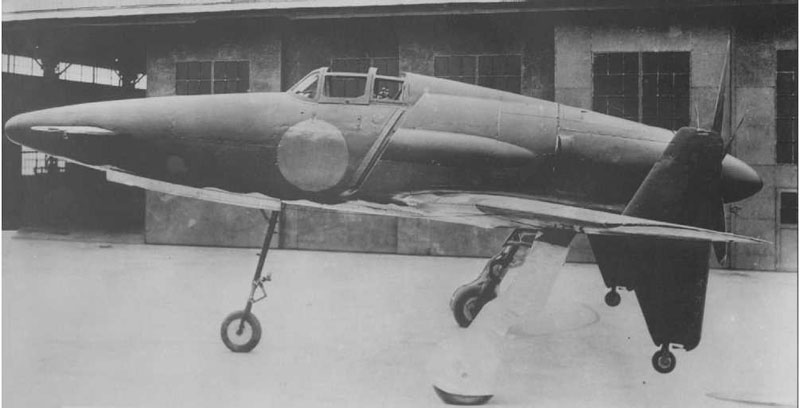
The Kyūshū J7W1 Shinden (“Magnificent Lightning”) fighter was a Japanese propeller-driven aircraft prototype with wings at the rear of the fuselage, a nose mounted canard, and pusher engine. Developed by the Imperial Japanese Navy as a short-range, land-based interceptor, the J7W was a response to Boeing B-29 Superfortress raids on the Japanese home islands. For interception missions, the J7W was to be armed with four forward-firing 30 mm cannons in the nose. The Shinden was expected to be a highly maneuverable interceptor, but only two prototypes were finished before the end of war. A jet engine–powered version was considered, but never even reached the drawing board.
5. Heinkel He 113
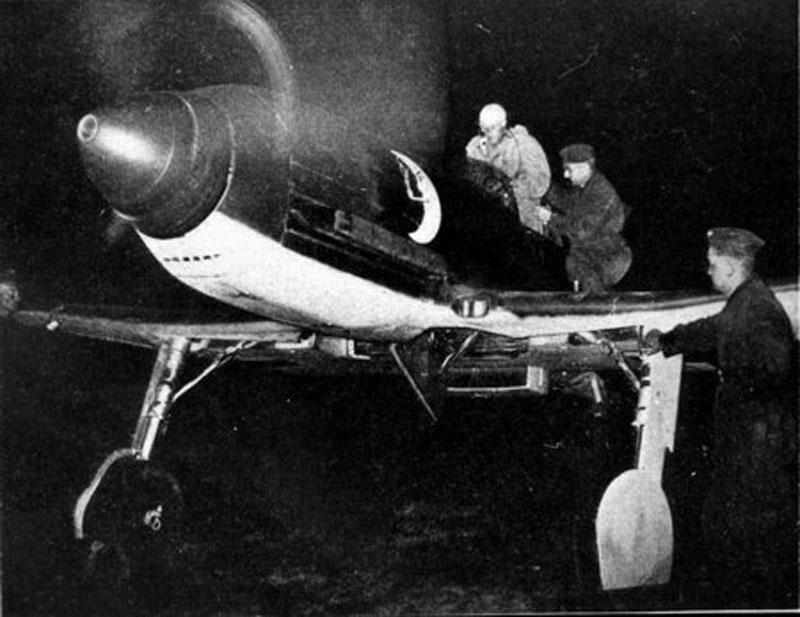
The Heinkel He 113 was a fictitious German fighter aircraft of World War II, invented as a propaganda and possibly disinformation exercise. In 1940, Joseph Goebbels publicised the fact that a new fighter was entering service with the Luftwaffe. The plan involved taking pictures of Heinkel He 100 D-1s at different air bases around Germany, each time sporting a new paint job for various fictional fighter groups. The pictures were then published in the press with the He 113 name. It is unclear even today exactly who this effort was intended to impress—foreign air forces or Germany’s public—but it seems to have been a successful deception. British intelligence featured the aircraft in AIR 40/237, a report on the Luftwaffe that was completed in 1940.
4. Fisher P-75 Eagle
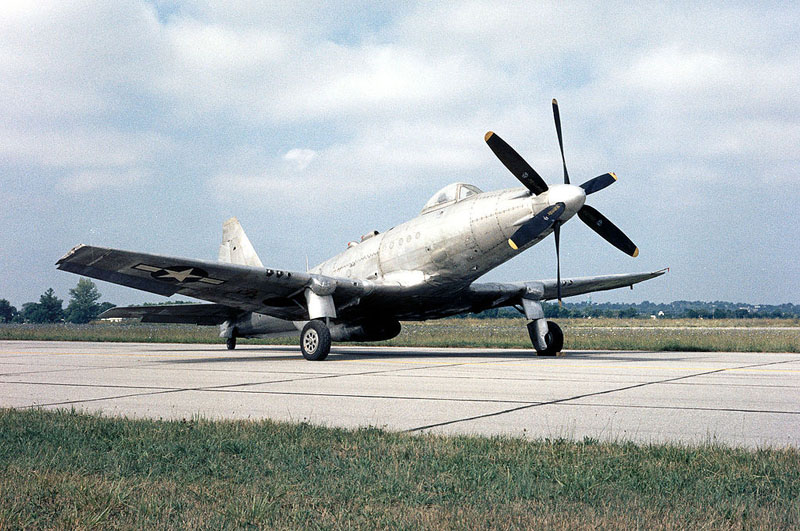
In October 1942, the contract for two prototypes, designated “XP-75”, was signed with the Fisher Body Division of GM. The design concept was to use the outer wing panels from the North American P-51 Mustang, the tail assembly from the Douglas A-24 (SBD), and the undercarriage from the Vought F4U Corsair in a general layout much as in the Bell P-39 Airacobra with the engine located amidships with the contra-rotating propellers driven through extension shafts. The program was cancelled after only a small number of prototypes and production aircraft had been completed, as it was no longer required in its original role, could not be quickly deployed, and possessed no significant advantages over aircraft already in production.
3. Bereznyak-Isayev BI-1

In the late 1930s, Soviet officials wanted a fast, short-range defense fighter powered by a rocket. The need for such a plane became especially pronounced as German forces began to invade Russia. Engineers completed plans for the rocket plane by spring of 1941, but Stalin did not give authorization to build a prototype. However, when the German invasion began, Stalin told engineers Alexander Bereznyak and Aleksei Isayev to get the airplane ready as soon as possible. It took only 35 days to complete a working prototype. Getting just under the deadline, a bomber towed the BI-1 aloft, allowing it to glide to the ground for a first test.Rocket motor tests commenced in 1942, but powered flights quickly revealed that the BI-1 only had 15 minutes of flight time from the moment the pilot ignited the rocket on the ground. This proved a severe limitation.
2. Junkers Ju 390
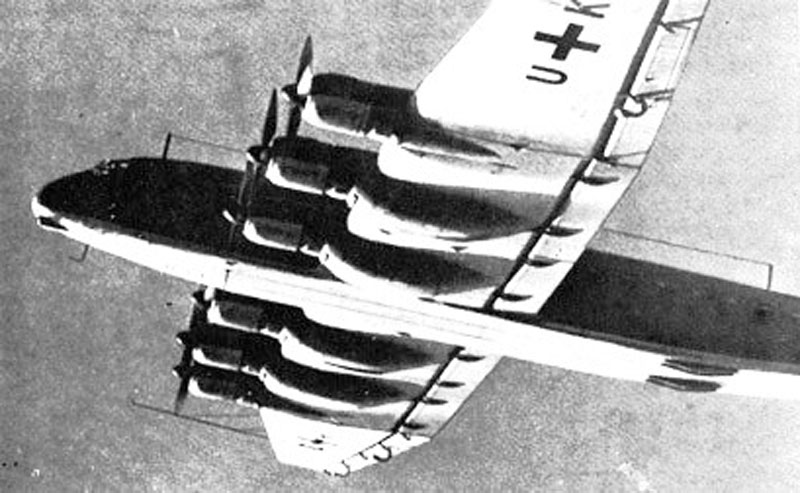
The Junkers Ju 390 was a German long-range derivative of the Junkers Ju 290 aircraft, intended to be used as a heavy transport aircraft, maritime patrol aircraft and long-range bomber. It was one of the aircraft designs submitted for the abortive Amerika Bomber project. Two prototypes were created by attaching an extra pair of inner-wing segments onto the wings of basic Junkers Ju 90 and Ju 290 airframes and adding new sections to lengthen the fuselages. The first prototype, V1, was modified from the Ju 90 V6 airframe. It made its maiden flight on 20 October 1943 and performed well, resulting in an order for 26 aircraft, to be named Ju 390 A-1. None of these had been built by the time that the project was cancelled in mid-1944. The second prototype, the V2, was longer than the V1 because it was constructed from a Ju 290 airframe.
1. Northrop N-9M
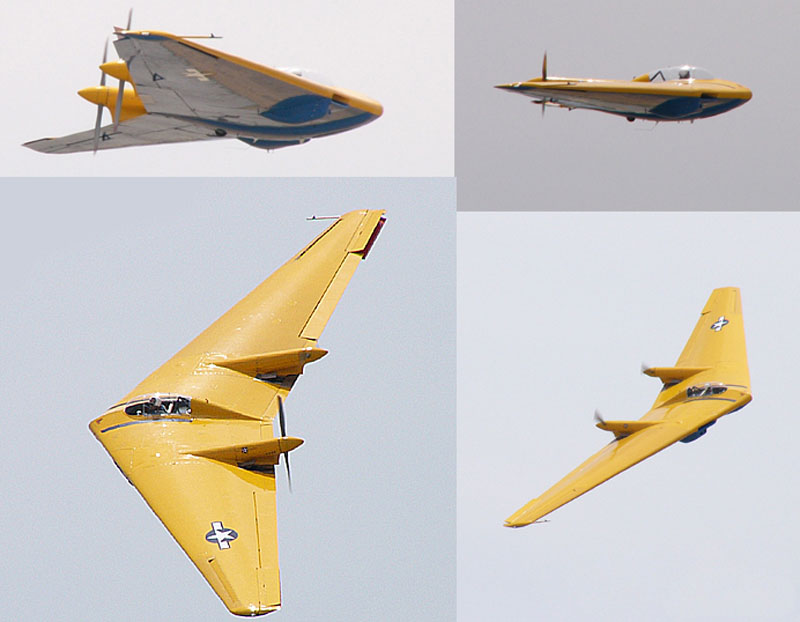
The Northrop N-9M is an approximately one-third scale, 60-ft span all-wing aircraft used for the development of the full size, 172-ft wingspan Northrop XB-35 and YB-35 flying wing long-range, heavy bomber. First flown in 1942, the N-9M (M for Model) was the third in a lineage of all-wing Northrop aircraft designs that began in 1929 when Jack Northrop succeeded in early experiments with his single pusher propeller, twin-tailed, twin-boom, all stressed metal skin Northrop Flying Wing X-216H monoplane, and a decade later, the dual-propeller N-1M of 1939–1941. Northrop’s pioneering all-wing aircraft would lead Northrop Grumman many years later to eventually develop the advanced B-2 Spirit stealth bomber
Already a member? Log-In or Register Now

Top 10 Rare Experimental Aircraft of WW2
If you're looking for some inspiration for your next scratch build project, here are ten unique airplane designs.
For this list, there are only three rules: 1) the aircraft had to exist, 2) it can't have gone into full production, but 3) it had to have completed at least one flight. We're also looking at planes that aren't your usual bunch, so there should be some here that you haven't seen before. Let's get started.

An image of the XB-42 (number 7 in this list).
10. Fisher XP-75 Eagle
An experimental mid-war fighter design.

First Flight: 1943
Purpose: Long-range fighter
Brief: This experimental aircraft was designed to meet the USAF requirements for a plane that could climb extremely quickly and fly over long distances. Its configuration was unusual, being similar to the Bell P-39 with a mid-engine layout. The aircraft showed promise but prototype testing was disastrous: numerous faults were found and, by the time it was ready, other more conventional fighters like the P-51 Mustang had surpassed it. The program was canceled in 1944.
9. Caproni Campini N.1
The second jet-powered aircraft to fly (briefly thought to be the first).

First Flight: 1940
Purpose: J et-powered prototype
Brief: You may know that the He-178 was the first ever jet aircraft to fly, but over in Italy the Italian Air Force had also been experimenting with jet propulsion. Before knowledge of the 178 got out of Germany, the N.1 was believed to be the first plane to fly using a jet turbine. The two prototypes built were tested until 1943 when the Allied invasion of Italy halted the operation.
8. Heinkel He 100

First Flight: January 1938
Purpose: High-performance fighter
Brief: Although the BF-109 became Germany's main fighter aircraft throughout the entirety of the war, there were other manufacturers who were vying to get the contract. Heinkel was one of these manufacturers. After failing to win with their He-112 design, they decided to go all out to produce the fastest fighter the world had yet seen. The result was this He-100. It could do a staggering 416 mph. Compare this to an early Spitfire that could do just 362mph. For multiple reasons, the Luftwaffe stuck with the BF-109 and the He-100 project was scrapped.
7. Douglas XB-42 Mixmaster

First Flight: 1944
Purpose: High-speed bomber
Brief: This plane might have been the USAF's answer to the high-speed light bomber. It started as a private venture by Douglas to match the range of a B-29 with a much smaller aircraft. The prototypes could do 410 mph. A surviving example is currently undergoing restoration work and will eventually be displayed in US National Air and Space museum.
6. Piaggio P.119
An Italian fighter with a mid-mounted radial engine.

First Flight: 1942
Purpose: Experimental fighter
Brief: The P.119 has a rather unique engine - or at least a unique positioning of the engine. Although planes like the XP-75 have been known to use mid-mounted inline engines behind the pilot's cockpit, this one had a radial mid-mounted engine. It was hoped this would allow more maneuverability, aerodynamic 'slipperiness' (for want of a better word), and more room for weaponry up front. The Italian Armistice of 1943 ended this project.
5. Blohm & Voss BV141
An asymmetrical German reconnaissance aircraft.

First Flight: 1938
Purpose: Tactical reconnaissance
Brief: Although the BV 141 performed very well (despite its irregular shape), the plane was never ordered into full production. If you want to find out more about how asymmetrical planes like this one work, check out this dedicated article.
4. Flettner FL 282

First Flight: 1941
Brief: You don't really hear about helicopters being used in WW2, but that's for good reason: most were simply not ready for war at that time. However, this German helicopter was (just about). It's a bit of an exception on this list as it was ordered into production, yet the factory only produced 24 of the 1000 units ordered before being destroyed in a bombing raid. Some of these surviving helicopters were used successfully, though, as transports and observer craft.
3. Bereznyak-Isayev BI-1
A Soviet rocket-powered plane on skis.
Purpose: Rocket-powered interceptor fighter
Brief: You've probably heard of the Me-163, but have you heard of the Russian version? The BI-1 was flown just 12 times under power and never made it into service and was retired in 1945.
2. Vultee XP-54
An unusual configuration airplane with a downward firing ejection seat.

Purpose: Fighter
Brief: This strange looking, extremely slender fighter prototype which was built to test a twin boom pusher configuration. It had a pretty futuristic entry system where the electrically powered pilot's seat would lower through the bottom of the plane.
1. Antonov A-40 Flying Tank
What it says on the tin!

Purpose: Battlefield tank transport
Brief: The above image of this crazy contraption isn't photoshopped. This was a real proposed solution to the problem of deploying vehicles to the battlefield that was first tested in 1942.
Read the full article
Article by James Whomsley
Editor of FliteTest.com
Contact: [email protected]
YouTube Channel: www.youtube.com/projectairaviation
Recommend This Article
You need to log-in to rate articles.
- "> Log In to Bookmark Un-Bookmark
- Find this article & others like it at www.FliteTest.com -
Related Articles

Top 10 Worst Planes of WW2
by FliteTest

Top 10 Outlandish Aircraft Designs that Flew

2016 Top 10 DIY Planes
Leave a comment, you need to log-in to comment on articles..
Get access to additional features and goodies.
Looking for your store account?

Forgot Your Password?

IMAGES
COMMENTS
Jun 18, 2024 · This is a dive into ten unusual and rare experimental planes which did not make it into mass production yet left their mark in aviation history. To qualify for our list, these aircraft had to exist, complete at least one flight, and not have been mass-produced.
Jan 26, 2016 · From early helicopters to bombers meant to attack the United States, these are some of the most interesting airplanes to ever fly. During World War II, floatplanes and flying boats played a big part in the air forces of the world powers.
A group of 1950s NACA research aircraft. As used here, an experimental or research and development aircraft, sometimes also called an X-plane, is one which is designed or substantially adapted to investigate novel flight technologies. [1] [2] [3]
Aug 25, 2024 · Here, we highlight ten unique experimental airplanes that, while they never made it to full-scale production, completed at least one flight, exhibiting the ingenuity and ambition of wartime engineers.
May 2, 2014 · The XP-67 Moonbat was just one of hundreds of aircraft tested but rejected by the air forces of World War Two. “A number of these experimental aircraft featured designs so innovative and outlandish they call out for recognition even now, more than 70 years later.”
Sep 5, 2024 · World War II saw a rapid advancement in aviation technology, as nations raced to develop faster, more powerful, and more innovative aircraft. Here are the top 5 experimental World War II planes that were truly ahead of their time.
The aircraft in this list include prototype versions of aircraft used by the German Luftwaffe during World War II and unfinished wartime experimental programmes. In the former, development can stretch back to the 1920s and in the latter the project must have started between 1939-1945.
The Heinkel He 113 was a fictitious German fighter aircraft of World War II, invented as a propaganda and possibly disinformation exercise. In 1940, Joseph Goebbels publicised the fact that a new fighter was entering service with the Luftwaffe.
Nov 23, 2018 · If you're looking for some inspiration for your next scratch build project, here are ten unique airplane designs. For this list, there are only three rules: 1) the aircraft had to exist, 2) it can't have gone into full production, but 3) it had to have completed at least one flight.
This category has the following 2 subcategories, out of 2 total.